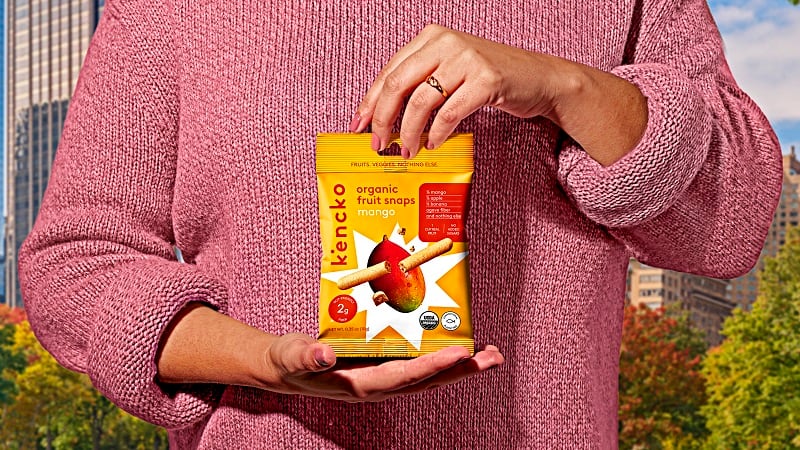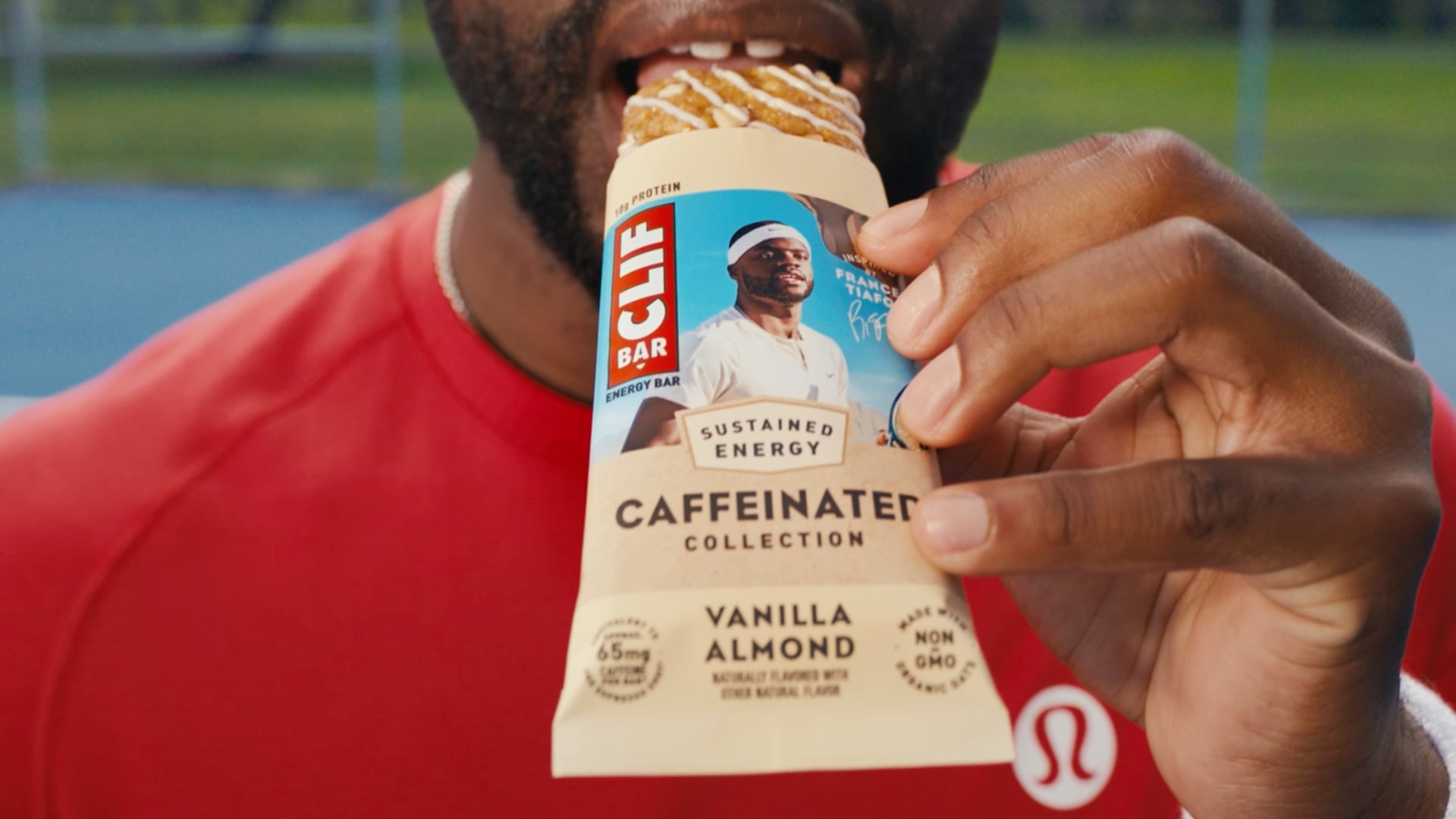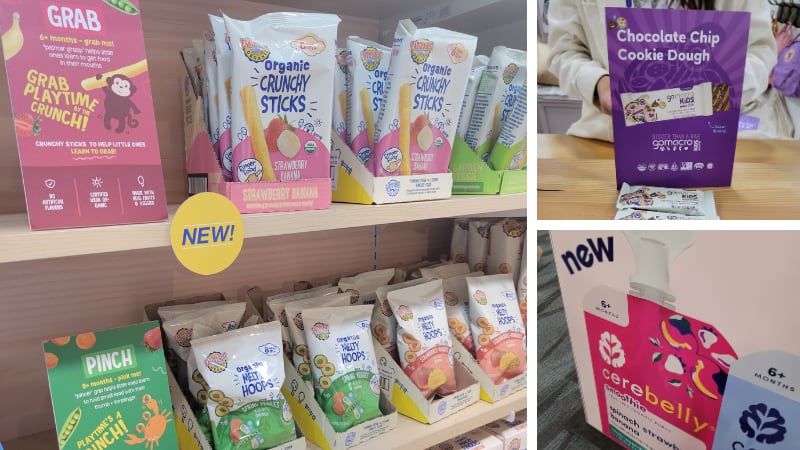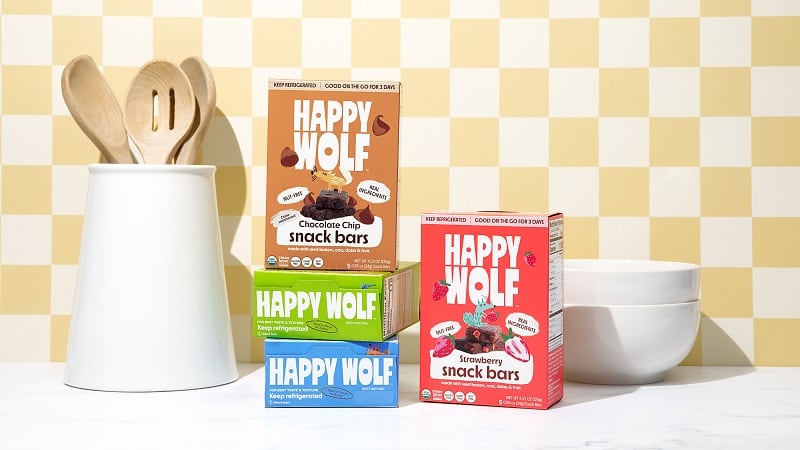Kencko further expands in snacks with the release of crunchy fruit snaps, while the company closely watches consumer spending and ongoing global trade tensions to ensure its products are accessible to consumers.
Available at Walmart and the brand’s website, Kencko’s fruit snaps come in mango, strawberry and raspberry and are flash-frozen and then slowly dried in a stick mold. Each package of snaps contains 2 grams or 7% of the daily recommended amount of dietary fiber, 4 to 5 grams total sugars and 0 grams of added sugars.
Already established in the beverage space, Kencko is building its snack portfolio – which started with its fruit snack line in 2023 – by using the same freeze-dried processes as its smoothie to retain the fruit’s taste and extend product shelf life, Kelly Deen, chief commercial officer at Kencko, said.
Kencko is exploring other indulgent flavors for future launches, based on retailers’ early impression of the products, she added.
“We are not moving away from any of the categories that we currently exist in, but we feel like this is really the next frontier. Snacking is the next frontier for our business,” she emphasized.
Building a new category comes with retail resistance
Kencko launched its instant smoothie brands through direct-to-consumer channels in 2018 and later launched into retail stores, finding success at major retailers, like Walmart.
That success did not come easy, as many retailers were confused about where to stock Kencko’s ready-to-blend smoothie packets, Deen admitted. Kencko smoothie mixes are shelf-stable, unlike its competitors in the frozen section.
“Challenge number one for us with the instant smoothies in particular, and our instant beverages, there was no instant smoothie category. So, inherently, having a company with products that do not fit neatly and nicely into an existing retail on-shelf category drives an enormous challenge,” she elaborated.
Kencko focuses on consumer accessibility amid volatility
As it expands, Kencko is closely watching what changes in consumer spending and trade tensions will mean for demand and prices, Deen said. The company built contingencies to ensure that consumers can access an affordable product, she added.
Consumer spending jumps in March
US retail and foodservice spending jumped to $734.9 billion in March – a 1.4% increase from February, according to the Census Bureau. However, spending increases were less a sign of economic strength and more consumers responding to uncertainty around tariffs, Chip West, consumer behavior expert and director of category strategy at RR Donnelley explained.
“You always have to be looking at accessibility for the customer,” Deen said. “That was one of the reasons that we decided to make choices on bringing in new SKUs, like two-packs versus four-packs. So, it provides another area of accessibility for that customer who maybe wants to try it.“
Kencko built a margin into its sales projections that allow the company to absorb increases in raw materials for the short term, preventing any price increases, Deen explained.
However, Kencko produces its products in Europe, so the evolving tariff situation could impact its supply chains and prices eventually, she added.
“The vast majority of our products are sold in the US, and like everybody, we are just going to watch it really carefully and do everything we can to mitigate any price changes,” she elaborated.





